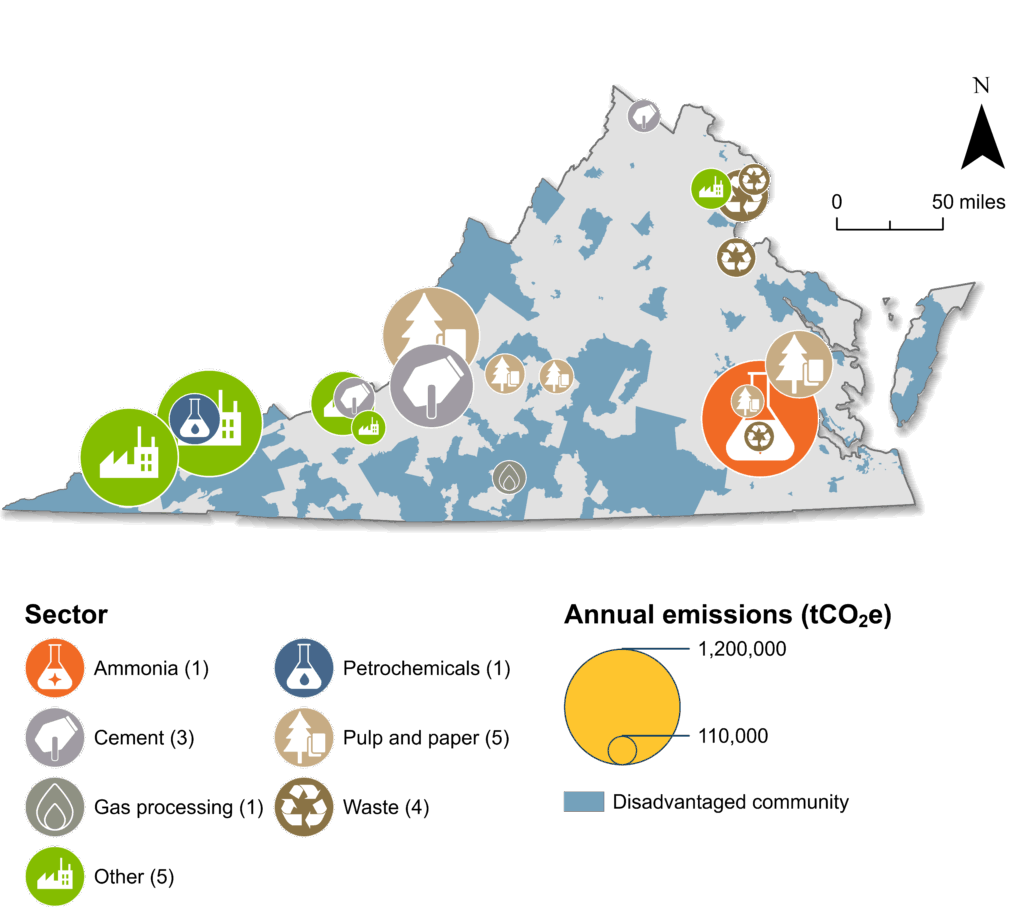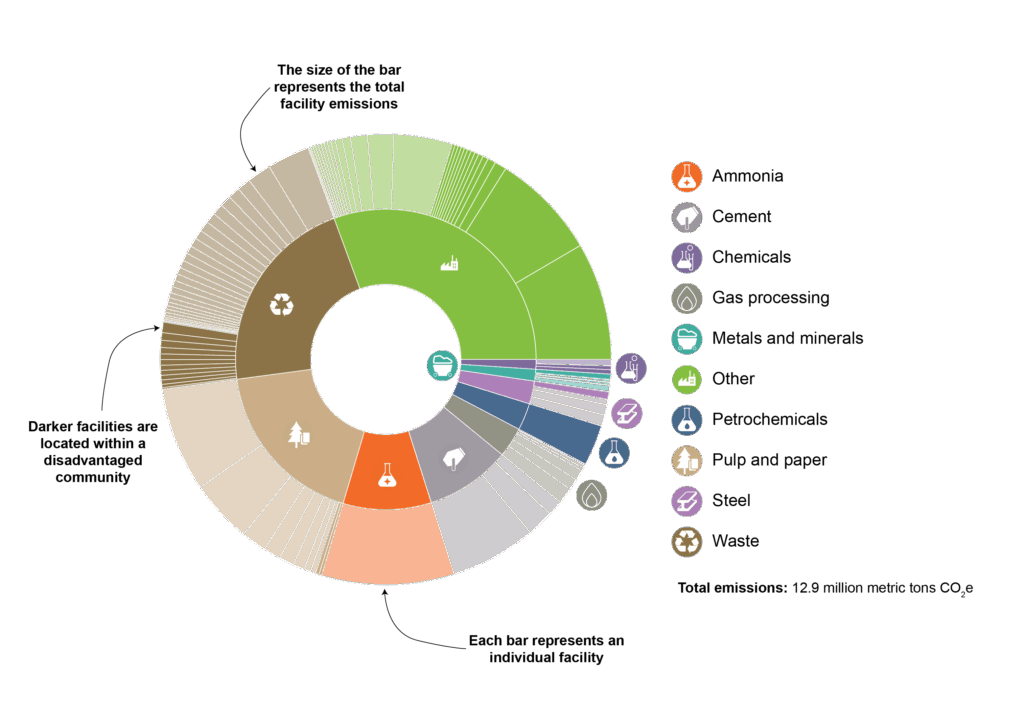Virginia
Virginia ranks among the top 25 states in industrial emissions. Landfills, underground coal mining, and pulp and paper production account for a large share of industrial emissions. Virginia generates more than six percent of nationwide emissions attributable to pulp and paper production. The Hampton Roads and Richmond areas contain significant industrial clusters. Dozens of landfills are scattered throughout the southern and western portions of the Commonwealth.

- The top 20 emitters are shown on this map, coded by industrial sector. The size of the circles corresponds to emissions: the larger the circle, the higher the emissions.
- Disadvantaged communities (as determined by the federal government) are shaded blue.

- The inner circle provides a visual representation of the share of emissions generated by each industrial sector.
- The outer circle also indicates the share of a sector’s emissions generated in disadvantaged communities.
STATE ENERGY POLICY:
Considering a state’s broader energy policy landscape is helpful when developing policies to support industrial modernization. Virginia has established a statutory greenhouse gas emissions target and a mandatory renewable portfolio standard. Virginia has not established a clean heat standard. While these formal commitments are not prerequisites for innovative industrial policy, they can provide a supportive framework. In addition, streamlining permitting and establishing an efficient, transparent appeals process that engages local communities early while giving clarity and assurances to project developers are key components of effective state energy policy. Discussions around innovative industrial policy present an opportunity for broader conversations about state energy policy to ensure a mutually reinforcing strategy.
LEGISLATIVE context & opportunity:
Let us know if you are aware of additional legislation advancing industrial innovation in Virginia that should be featured. The context below is not exhaustive and serves as an example of recent policies and programs and where there may be future opportunities:
- In 2020, Virginia enacted the Virginia Clean Economy Act, which tasked the state Department of Energy and other stakeholders with developing a 2021 report with recommendations on reaching emissions goals with the least impact on ratepayers. The report states, “Virginia is still in the early stages of the transition to an electric grid with high levels of intermittent renewables that support increased electrification of transportation and other ends uses.” State policy can be developed to ensure that the increasing availability of renewables can enable and incentivize industrial electrification.
- Virginia Clean Energy Innovation Bank (VCEIB): VCEIB, a loan and financing program for clean power generation and infrastructure, was established in 2024 with the enactment of S.B. 729. In early 2025, the bank also accepted applications for several other targeted funding programs that support industrial innovation: the Virginia Grid Reliability Program, Southwest Virginia Hydrogen Hub, and Carbon Storage Feasibility Study.
- Carbon management technologies are another opportunity to reduce industrial emissions in the state. Learn more about the economically feasible subsectors in Virginia and facilities that qualify for the federal 45Q tax credit.
Explore recent legislation in Virginia and all 50 states by clicking on a specific year: 2025 legislation, 2024 legislation, 2023 legislation.
